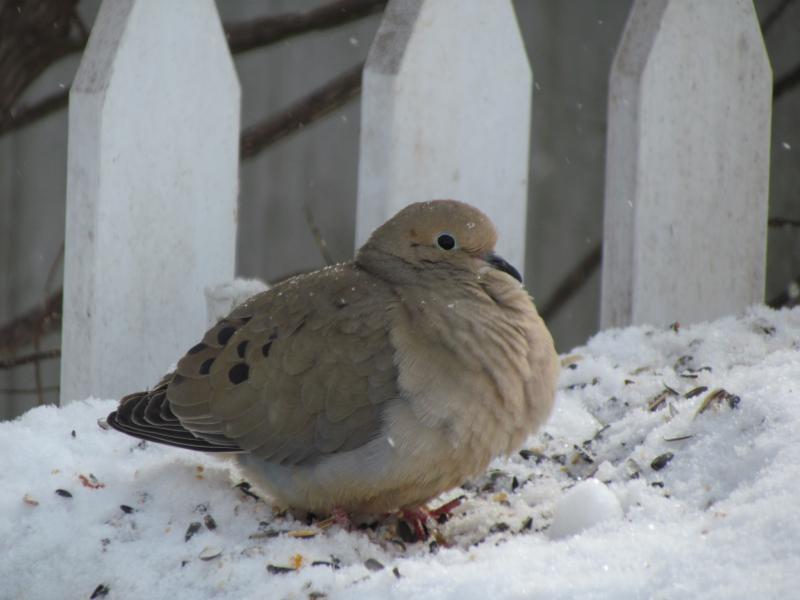People think of doves as peaceful. In some cultures, they’re considered a symbol of peace. Maybe that’s because they typically occur together in groups and can sometimes be seen roosting together in close proximity by all appearances in great social harmony.
But in spring, things can get a bit testier, at least between males. Already in late February and certainly continuing into March, many people report hearing the tell-tale low “who-ooo-ooo-ooo” of male mourning doves beginning their courting of females.
The birds are named for their song, which to some people has a mournful quality, but as the season progresses, there’s nothing mournful about them. You’ll probably see a male mourning dove puffed up under your feeders, strutting in front of one or more females as he sings some version of the low, cooing song. During these “tender” moments, you’ll see occasional flair-ups among competing males, with much wing-flapping and bill-jabbing.
Mourning doves are widespread throughout North America and are very common, with estimates of a total population size of well over 100 million, despite the fact that they are a hunted species in many states, with tens of millions taken annually. They prosper, in part, because in many regions they are prolific. Although typically only raising two or three young in each nest, they will nest multiple times each season; in warm parts of the country, the nesting season can extend across much of the year.
Here in Maine, mourning doves were once rather rare, occurring only in the southern tip of the state, and there only in summer. In fact the common dove of the state was, sadly, the now-extinct passenger pigeon, which was famous for its massive flocks numbering in the millions. There are a number of rural roads scattered around Maine with the name “pigeon” in them that we have often wondered were a legacy of long-forgotten favored nesting or migratory stop-over locations for passenger pigeons.
Mourning doves increased in Maine certainly noticeably in the first half of the 1900s, with the first nest reported in 1919 (in Eliot). It was still big news when one wintered in Portland in 1923-24. Now, of course, people have birds in their yards and neighborhoods year-round throughout much of the state, at least where there are feeders on which they rely during winter. Although some birds remain all winter, many mourning doves are highly migratory, some moving as far south as Central America and the Greater Antilles.
Maine towns and cities can claim another member of the dove family as their own — the familiar pigeon of the city, officially now known as the “rock pigeon,” so named for cliff nesting in its original place in Old World. These are descendants of birds brought over with early settlers and kept for food. Over time, as more and more escaped and began finding food on their own, they established feral populations. Many a winter peregrine falcon or cooper’s hawk has relied on such populations of rock pigeons to make it through the cold winter.
Another non-native species of dove now established in parts of the eastern U.S., the Eurasian collared-dove, has been sighted several times in Maine. Larger and paler than the mourning dove, the Eurasian collared-dove has a black collar mark on the back of the neck, lacks the black spots on the folded wing and has a squared-off rather than wedge-shaped tail. If you see one of those, get your camera ready, and be sure to let us know!





























.png)

.png)
